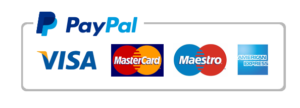Learning styles represent the different approaches to learning based on preferences, weaknesses, and strengths. For learners to best achieve the desired educational outcome, learning styles must be considered when creating a plan. Complete “The VARK Questionnaire,” located on the VARK website, and then complete the following:
Learning styles represent the different approaches to learning based on preferences, weaknesses, and strengths. For learners to best achieve the desired educational outcome, learning styles must be considered when creating a plan. Complete “The VARK Questionnaire,” located on the VARK website, and then complete the following:
- Click “OK” to receive your questionnaire scores.
- Once you have determined your preferred learning style, review the corresponding link to view your learning preference.
- Review the other learning styles: visual, aural, read/write, kinesthetic, and multimodal (listed on the VARK Questionnaire Results page).
- Compare your current preferred learning strategies to the identified strategies for your preferred learning style.
- Examine how awareness of learning styles has influenced your perceptions of teaching and learning.
In a paper (750-1,000 words), summarize your analysis of this exercise and discuss the overall value of learning styles. Include the following:
- Provide a summary of your learning style according the VARK questionnaire.
- Describe your preferred learning strategies. Compare your current preferred learning strategies to the identified strategies for your preferred learning style.
- Describe how individual learning styles affect the degree to which a learner can understand or perform educational activities. Discuss the importance of an educator identifying individual learning styles and preferences when working with learners.
- Discuss why understanding the learning styles of individuals participating in health promotion is important to achieving the desired outcome. How do learning styles ultimately affect the possibility for a behavioral change? How would different learning styles be accommodated in health promotion?
Cite to at least three peer-reviewed or scholarly sources to complete this assignment. Sources should be published within the last 5 years and appropriate for the assignment criteria.
Prepare this assignment according to the guidelines found in the APA Style Guide, located in the Student Success Center. An abstract is not required.
This assignment uses a rubric. Please review the rubric prior to beginning the assignment to become familiar with the expectations for successful comp


